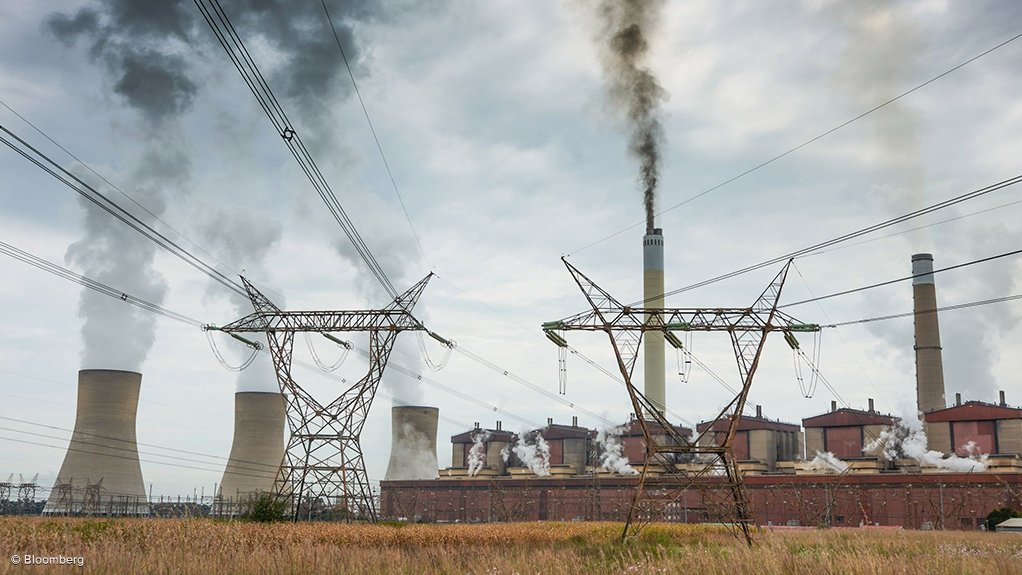Short-term solutions to energy challenges lie with private sector, incentives
It will take about three years to improve the energy availability factor of State-owned power utility Eskom's coal-fired power stations to an acceptable level of about 65%, as generator units must be taken offline to do deep maintenance.
This meant Eskom's energy availability would drop further before it coud be improved, said energy expert Chris Yelland on May 9 at the Africa Automation Technology Fair.
Further, public procurement processes to procure new generation capacity had proven slow, and it could be expected that no new generation capacity would be brought online through the State's processes within the next three years, he added.
However, with the reduction in red tape, private procurement has started to accelerate dramatically. While few projects are delivering power yet, lots of private sector power projects have been registered and are starting to be built and generation can be expected within 18 months to two years.
"Private energy procurement is rising exponentially because public procurement is not happening," he said.
Further, the evolution of the electricity sector from a centralised planning and monopoly approach to an open electricity market will inevitably happen and will follow similar trends worldwide where energy trading is facilitated across the grid through wheeling.
A key challenge in South Africa was that there had been significant underinvestment in the grid for many years and, while the grid was holding up remarkably well, there were not many new grid connections available for generation projects, he said.
"For private procurement to take off, investment in the grid must take place. However, while there are limited grid connections in the Eastern Cape, Northern Cape and Western Cape, there are grid connections available in other parts of the country.
"The entire South Africa has good wind and solar resources. While the best resources are in the Eastern Cape and Northern Cape, the rest of the country has higher quality renewable resources than what most other countries have," Yelland emphasised.
While South Africa, in keeping with the national energy plan, must fix Eskom and then procure more new generation, in the short-term, only private procurement could solve the challenge of energy available in the economy, he noted.
"The new electricity minister's plan to procure 15 000 MW of renewable energy will take up to five years, and the challenge of grid access for these projects has not been addressed. Therefore, it is not a quick solution."
INCENTIVES IMPACT
However, Vietnam used an aggressive incentivisation scheme that encouraged the development of 9 000 MW of renewable energy and battery storage projects in all sectors of its economy within one year, Yelland highlighted.
South Africa is being subjected to Stage 6 loadshedding, which indicates that between 6 000 MW and 8 000 MW of generation capacity is offline owing to breakdowns or maintenance.
"If we want to develop 9 000 MW in one year, we can do it, but will need to implement aggressive incentivises," he emphasised.
While there are good incentives available for businesses, with up to 125% of the cost of energy systems being deductible from taxable income, there are very weak incentives for individuals and residences, with only up to 25% of the value of the solar panels being tax deductible and up to a maximum value of R15 000.
"There is no technical reason South Africa, as a country richly endowed with renewable and fossil natural energy, should be experiencing loadshedding," he averred.
If big, medium-sized and small businesses and residents take ownership of their energy future and set their own energy efficiency, conservation and generation targets, loadshedding could be ended in two years, Yelland emphasised.
"The residential, commercial, property, mining, manufacturing and agriculture sectors should all announce their measures for new self-generation and distributed generation targets, as this is where the solution to the energy challenge over the next two years will come from.
"Further, within a decade, it is possible that South Africa will have surplus energy, especially during the daylight hours, which will drive prices down, enable charging of energy storage systems at low prices and fundamentally change industries that can benefit from these times of low energy costs," he highlighted.
Greater penetration of renewable and alternative energy in the economy would also reduce its carbon footprint and its extreme carbon intensity, which was among the highest in the world. This would serve to protect the competitiveness of South Africa's products and enable it to fulfil its international climate change obligations, Yelland added.
DEMAND-SIDE LEVERS
Meanwhile, it was easier to reduce energy demand than it was to generate more energy, and demand-side-management levers should be employed to reduce demand, said specialist energy enterprise management consultancy LTM Energy CEO Dhevan Pillay.
Demand-side-management and response measures costs were estimated at about R2/kWh, while the costs to the economy of each kWh not used during loadshedding was around ten-times that, which made the business case obvious, he added.
"It is best practice to invest in demand-side-management measures, including load management, energy efficiency and energy conservation measures," he said.
However, the short-term fundamentals of scale, significance and speed of implementing demand-side measures are core issues, and demand-side measures must be proactively pursued by each company and individual to have a nation-wide impact and help to reduce loadshedding.
"Energy efficiency and conservation represent the cheapest and cleanest form of renewable energy, which makes investment in these measures fundamental for achieving energy security," said Pillay.
To support the necessary speed, scale and significance of demand-side measures, companies can, in conjunction or addition to their energy efficiency and own generation efforts and in partnership with energy service providers and other stakeholders, roll out energy efficiency and renewable generation projects for their employees' homes.
"This will dramatically broaden and increase the impact of these measures, and reduce the demand for energy. Through such broadened initiatives, we should easily be able to reduce demand by 8 000 MW within six months to a year and eliminate the need for loadshedding," he said.
Further, there were Eskom and tax incentives available to support the rollout of demand-side measures, as well as funding from Eskom for the implementation of these measures. Similar incentives and funding were available for industrial energy efficiency through other programmes, he highlighted.
"There is power in simplicity and simple solutions can make a big impact on South Africa's energy availability," Pillay noted.
Article Enquiry
Email Article
Save Article
Feedback
To advertise email advertising@creamermedia.co.za or click here
Comments
Press Office
Announcements
What's On
Subscribe to improve your user experience...
Option 1 (equivalent of R125 a month):
Receive a weekly copy of Creamer Media's Engineering News & Mining Weekly magazine
(print copy for those in South Africa and e-magazine for those outside of South Africa)
Receive daily email newsletters
Access to full search results
Access archive of magazine back copies
Access to Projects in Progress
Access to ONE Research Report of your choice in PDF format
Option 2 (equivalent of R375 a month):
All benefits from Option 1
PLUS
Access to Creamer Media's Research Channel Africa for ALL Research Reports, in PDF format, on various industrial and mining sectors
including Electricity; Water; Energy Transition; Hydrogen; Roads, Rail and Ports; Coal; Gold; Platinum; Battery Metals; etc.
Already a subscriber?
Forgotten your password?
Receive weekly copy of Creamer Media's Engineering News & Mining Weekly magazine (print copy for those in South Africa and e-magazine for those outside of South Africa)
➕
Recieve daily email newsletters
➕
Access to full search results
➕
Access archive of magazine back copies
➕
Access to Projects in Progress
➕
Access to ONE Research Report of your choice in PDF format
RESEARCH CHANNEL AFRICA
R4500 (equivalent of R375 a month)
SUBSCRIBEAll benefits from Option 1
➕
Access to Creamer Media's Research Channel Africa for ALL Research Reports on various industrial and mining sectors, in PDF format, including on:
Electricity
➕
Water
➕
Energy Transition
➕
Hydrogen
➕
Roads, Rail and Ports
➕
Coal
➕
Gold
➕
Platinum
➕
Battery Metals
➕
etc.
Receive all benefits from Option 1 or Option 2 delivered to numerous people at your company
➕
Multiple User names and Passwords for simultaneous log-ins
➕
Intranet integration access to all in your organisation





















